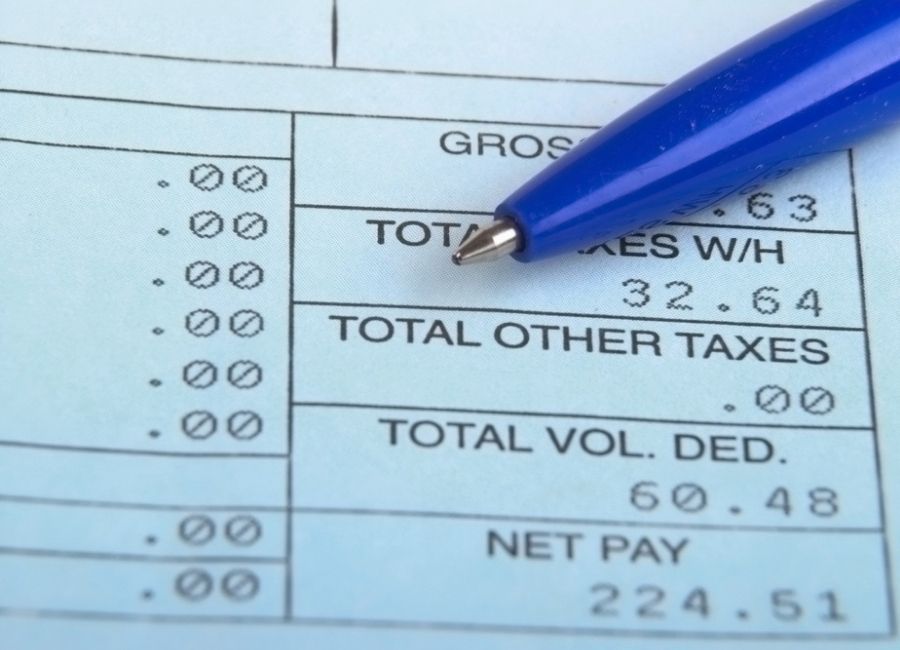According to a 2015 FINRA NFCS survey, only 40% of the people surveyed spend less than they earn. 38% of the people live paycheck to paycheck, and 18% consistently spend more than they make. That basically means that a majority of people are breaking even or in the red every month. If you’re a part of that statistic, promise me you’ll keep reading.
I’ll be walking you through the steps to take to have more money in the bank after each pay period. I’m not saying it’s going to be easy, but it will be worth it. You don’t want to be like a majority of people who are struggling. You want to be a woman with money in the bank, who feels financially secure. I want that for you too!
How to Have More Money in the Bank After Each Paycheck
#1 – Commit to doing what it takes
If you truly want financial freedom for your life, you’re going to have to commit to doing what it takes to get it. If financial freedom sounds too far away, think about a realistic accomplishment for your situation right now. If you are living paycheck to paycheck, a realistic accomplishment would be having more money in the bank after each paycheck. Basically, breaking the paycheck to paycheck cycle.
If you’re in the red every month, a realistic accomplishment would be breaking even every month. You need to follow the proper levels if you want to hit that end result. Get ready to make sacrifices, say “no” when you don’t want to, and stay the course. Commit to doing what it takes, right here and now.
#2 – List out all of your bills and expenses for each pay period in the month
Now that you’re committed 
If you’re paid on the 15th and 30th of each month, you’ll have a list of expenses that are due between the 30th-14th and a list of expenses for the 15th-29th. Make sure to include balances for the bills that are due. Also, include any variable spending. This includes things like gas, groceries, dining out, and other expenses that don’t have specific due dates, but are necessary for living.
#3 – Determine if your monthly pay covers your monthly expenses
Once you have your lists created, calculate a total for the month that is spent on your bills and expenses. Does your total monthly income cover this total monthly expense number? If no, then you’ll have to work on bringing in more money or cutting back some of your expenses. This number should always be zero (break even) or positive (profit).
#4 – Determine if your pay period income covers your pay period expenses
Now, take it a step further. Determine if your total income for the first pay period covers the total amount of expenses for that pay period. Do this for your other pay periods as well. If you’re paid weekly, there should be 4-5 comparisons. If you’re bi-weekly, there should be 2-3 comparisons. If you’re paid on the 15th and 30th, there should be two comparisons.
You’re basically looking to see if your income per pay period covers your expenses per pay period. This tells you if you need to have money from one pay period roll into the next to help you cover bills and expenses. This is powerful information to be mindful of. If you don’t know this and you spend all your money each pay period, you’ll never have enough.
#5 – Keep in mind any money that needs to roll over between pay periods
As I mentioned above, you want to be mindful of any money that needs to roll over between pay periods. You’ll need to factor that roll over amount into your budget, so you’ll always have what you need. The goal here is to look holistically over the month, and not stay stuck in individual pay periods throughout the month.
#6 – Determine what money should be left after bills and expenses are paid
Referring back to your monthly totals, you should be able to see what money should be left over each month after all of your bills and expenses are paid for. Whatever this number is, that is what you have to work with to help you reach your goals.
When you know this number, you can always make sure that number is what you have saved or put towards debt. If you don’t put that number in savings or towards debt, it’s a sign that you overspent. It could also mean that other bills and expenses have slipped through the cracks. Revisit your bills list to pinpoint where the error is coming from.
#7 – Allocate that money accordingly (build an account buffer, save, extra debt payoff)
Thinking about that number you should have left over each month, it’s time to put it to work. You can leave it in your checking account to help you build a buffer. You can put it into savings. You can allocate towards your debt. The options are endless, depending on what your goals are.
I’d recommend building an account buffer, or having one month’s worth of bills saved up, then allocate it towards other savings and debt pay off. I recommend this because it will help you stay on track, should something unexpected pop up…and trust me, it will.
#8 – Rinse and repeat each month
Once you’ve taken the time to complete steps #1-4, you won’t have to redo those steps unless your situation changes. In the meantime, you can rinse and repeat steps #5-7 month over month. You’ll keep going and going until you reach all of your goals.
Tips to Help You Succeed
#1 – Keep the process above manual until it becomes a habit
I know the steps above may seem daunting, but most of them are one and done. I highly suggest keeping all of these steps manual until you are in a habit and routine with your money. Don’t worry about setting up automatic payments or transfers. Once the process works smoothly, you can start putting things on auto-pilot.
Keeping the process manual also helps ensure you always know what’s going on in your situation. You are able to easily see if something is off. This understanding is critical in the beginning stages of having more money in the bank after each paycheck.
#2 – Make sure you think about one-off expenses
I already hinted that one-off or unexpected expenses can (and will) come up to throw your numbers off. Be ready so you don’t have to get ready. Focus on that account buffer or savings to help you seamlessly move past unexpected expenses.
#3 – Don’t use credit, if you don’t have to
As long as your income covers your expenses, there should never be a need for you to use credit cards. If you don’t have the money in your bank account to pay for something, you don’t need it. Until you are in a good place with your financial habits and decisions, avoid credit at all costs.
#4 – If the numbers say you should have money left over, but you don’t, seek help
The one thing I love about budgeting is that it’s all logic. The numbers don’t lie. If you should have money left over each month and you don’t, it’s because you are spending it. That becomes another issue that should be worked through. Working with a finance coach can help you control your spending, so that you can actually stick to your budget. If something isn’t working, don’t be afraid to seek outside help.
Related: Stop Living Paycheck to Paycheck
You absolutely can have more money in the bank after each paycheck, you just need to do what it takes! The steps above can help set you up for success, so implement them wisely! Have you gotten out of a paycheck to paycheck cycle? What strategies worked best for you? Post a comment below to share your thoughts and experiences!






1 thought on “How to Have More Money in the Bank after Each Paycheck”
This is a process that requires a time to implement. Don’t expect results instantly, but be willing to stay consistent and stick with doing the right steps.